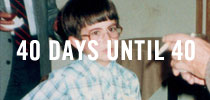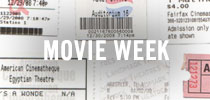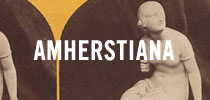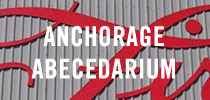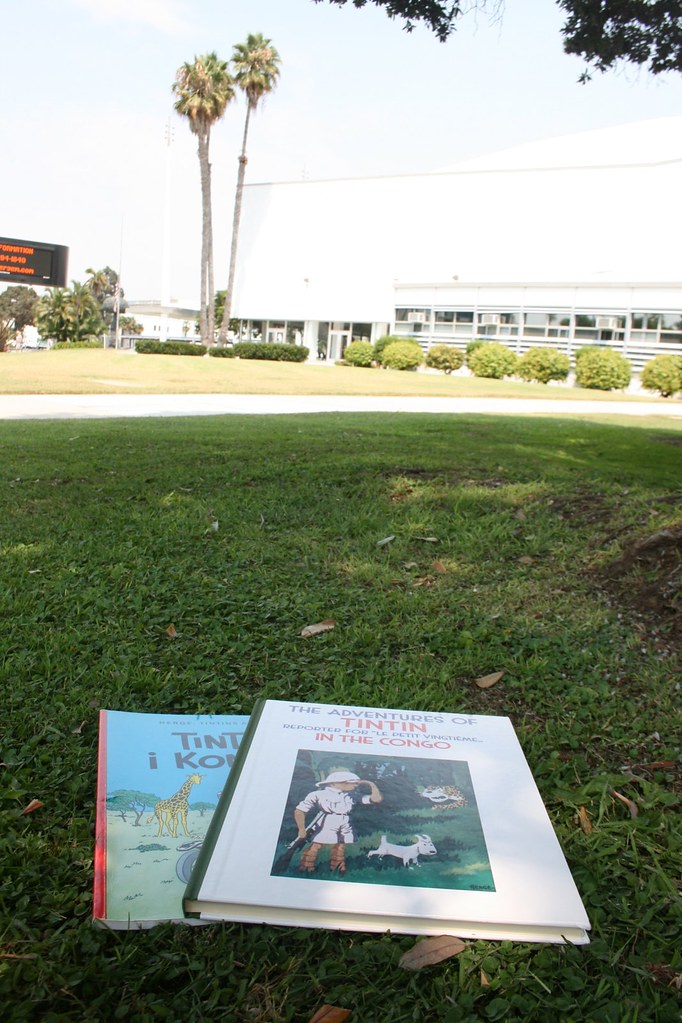
I moved a short distance from the County Building today to a shady tree in front of the Santa Monica Civic Center to spend my lunch break. Next up in the Tintin Canon is Tintin in the Congo the most controversial Tintin book – for good reason – and another one that I only have in English in a facsimile of the original black and white version from 1931. When we were in Sweden in 1985, we picked up a copy of the 1946 redrawn edition (with more changes made in 1975) that to our eyes looked like the familiar Tintin we knew; the English hardcover facsimile copy I picked up in the ’90s was very much of the Tintin in the Land of the Soviets mold, with detail-less backgrounds, a more circle-headed and mostly mouthless Tintin, and lots of explanation. I read the facsimile today, with occasional glances to see how different the re-drawn version is, and often to marvel at how masterful the art in the redrawn version is compared to the original.
As in the previous book, everything that happens in this adventure seems to require explanation, much of it by Snowy, who, in comparison with the later color version, and with most other books in the series, spends a lot more time talking. Buying into the idea that Snowy has thoughts that are expressed, however you believe them to be expressed, is part of enjoying the series, but here, he seems to spend all of his time telling us what just happened or what’s about to happen. The primary reason this seems to happen, I think, is that the drawings just aren’t strong or clear enough to get across what’s going on, something Hergé got much better at over time.
Similarly, somewhere along the way, Hergé learned that you didn’t have to show a dotted line from someone’s eyes to the thing they’re looking at in order to demonstrate that they’re seeing it. Unfortunately, that point came after this book, which is full of such frames. Tintin also refers to himself — “if my name isn’t Tintin, ” and so on — more than in any other book, I think. The book has some strange inconsistencies: more than halfway through the book, all of the sudden we get boldface narration — “Meanwhile…” — in two panels, but nowhere else.
The Al Capone reference seems really forced, a connection with the real world that Hergé might have thought necessary for some reason, and that he continued (and then wisely stopped) in the next adventure, Tintin in America. But that’s tomorrow.


